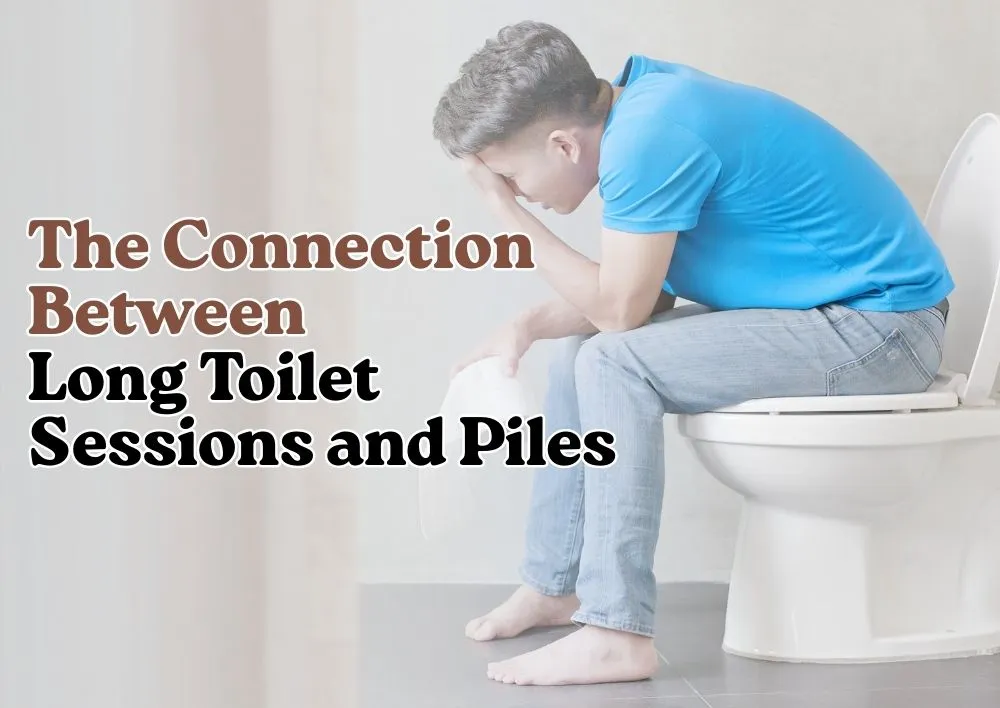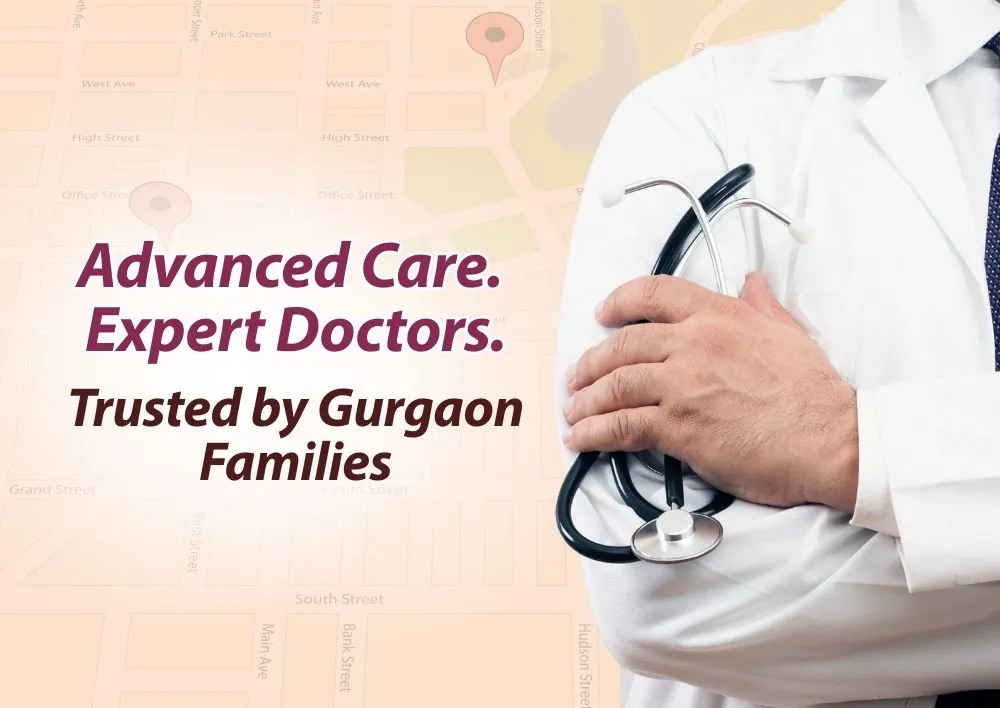The Connection Between Long Toilet Sessions and Piles
Summary
Piles, also known as hemorrhoids, are swollen veins in the lower rectum and anus that can cause discomfort, itching, and bleeding. While many factors contribute to piles, one often ignored cause is long toilet sessions. Spending too much time sitting on the toilet may appear harmless, but it can put significant strain on your anal veins and increase the risk of developing piles.
Link Between Long Toilet Sessions and Piles
Long toilet sessions may seem harmless, but sitting too long puts constant pressure on the rectal veins, which is a direct cause of piles. Even small habits, like reading or scrolling your phone while on the toilet, can make a difference over time. Recognizing this connection is the first step toward prevention.
Dr. Anubhav Sangwan, a leading general surgery doctor in Gurgaon at Miracles Apollo Cradle/Spectra, explains, “Many patients don’t realize that what seems like a harmless habit, sitting on the toilet for long periods, can actually trigger piles over time. Small changes in bathroom routines, such as limiting toilet time and avoiding straining, can significantly reduce the risk of developing hemorrhoids.”
By adopting better toilet habits, shortening bathroom time, maintaining proper posture, avoiding straining, eating a fiber-rich diet, staying hydrated, and exercising regularly, you can protect yourself from hemorrhoids and maintain good digestive health.
How Long Toilet Sessions Cause Piles
Sitting on the toilet for extended periods increases pressure in the rectal veins. This prolonged pressure can lead to swelling and inflammation, resulting in hemorrhoids. The problem usually worsens when people use their phones or read while on the toilet, unintentionally extending their bathroom time.
Key factors include:
-
Straining while passing stool: Straining increases pressure on the rectal veins.
-
Sitting too long: Even without straining, prolonged sitting can reduce blood flow and weaken veins.
-
Poor bathroom posture: Sitting at a right angle can make bowel movements harder, causing strain.
Symptoms of Piles
Recognizing piles early is important to prevent complications. Common symptoms include:
-
Pain or discomfort around the anus
-
Itching or irritation
-
Swelling or lumps near the anus
-
Bleeding during bowel movements
If you notice these symptoms, consult a general surgeon near you immediately.
Preventing Piles Through Better Toilet Habits
Simple changes in bathroom habits can significantly reduce the risk of piles.
-
Limit Your Time on the Toilet
Avoid long sessions. Aim to finish your business within 10–15 minutes. Avoid reading or using your phone while on the toilet.
-
Maintain a Proper Posture
Using a footstool to elevate your legs slightly can help align your rectum for easier bowel movements. This reduces straining and pressure on the veins.
-
Don’t Strain
Straining is a major cause of piles. If you feel constipated, increase fiber intake and stay hydrated to make stools softer and easier to pass.
-
Stay Hydrated
Drinking plenty of water helps prevent constipation and reduces the risk of hemorrhoids. Aim for at least 7–8 glasses of water daily.
-
Eat a Fiber-Rich Diet
Include fruits, vegetables, whole grains, and legumes in your meals. Fiber adds bulk to stool and promotes smooth bowel movements.
-
Exercise Regularly
Moderate physical activity, like walking or yoga, improves digestion and prevents constipation. Avoid prolonged sitting at work, which can worsen vein pressure.
Medical Treatment for Piles
If piles develop despite preventive measures, medical treatment may be necessary. Depending on severity, treatments include:
-
Topical creams or ointments: Reduce pain and inflammation.
-
Oral medications: Help relieve discomfort and swelling.
-
Minimally invasive procedures: Rubber band ligation, sclerotherapy, or infrared coagulation for persistent cases.
-
Surgery: Hemorrhoidectomy is reserved for severe or recurring piles.
Early intervention ensures faster recovery and prevents complications like chronic pain or excessive bleeding.
When to See a Doctor
Seek medical advice if you experience:
-
Severe pain or bleeding
-
Hemorrhoids that don’t improve with home care
-
Prolapsed piles
Consulting a doctor is the safest way to get an accurate diagnosis and appropriate treatment.
Conclusion:
Long toilet sessions are a simple habit that can lead to painful piles over time. By understanding the link between extended bathroom time and hemorrhoids, you can make lifestyle adjustments that prevent discomfort and improve overall digestive health. If you are experiencing symptoms of piles or want to prevent them, book a consultation with a general surgeon near you at Miracles Healthcare today.
Frequently Asked Questions
Yes, spending too much time on the toilet increases pressure on rectal veins, which can lead to hemorrhoids or worsen existing ones.
The most common cause of piles is chronic constipation and straining during bowel movements, which weakens and swells the rectal veins.
Yes, prolonged sitting, whether on a toilet or chair, can reduce the flow of blood and put extra pressure on rectal veins, increasing the risk of piles.
Drinking enough water softens stool, prevents constipation, and reduces strain, helping in both the prevention and management of piles.
Sitting for more than 10–15 minutes on the toilet is considered too long and may increase the risk of hemorrhoids.
Yes, mild hemorrhoids often improve with lifestyle changes, hydration, and diet. Severe cases may need medical or surgical treatment.
Sit with your feet slightly elevated on a stool to create a natural squatting position, which makes bowel movements easier and reduces strain.
Eat a fiber-rich diet, drink enough water, and exercise regularly. Avoid distractions like phones or books to limit time spent in the bathroom.
Miracles Apollo Cradle/Spectra is among the best general surgery hospitals in Gurgaon for hemorrhoid treatment, offering advanced techniques, experienced surgeons, and comprehensive patient care.








.webp)






Was the information useful?
0 0